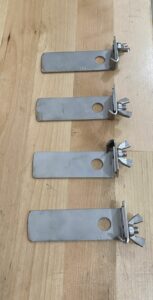Why is rub testing important ?

Rub testing equipment plays a crucial role in assessing the durability and quality of various materials, ensuring they meet industry standards. This technical guide provides insights into the functionality and applications of rub testing equipment, shedding light on its significance in maintaining product integrity.
Understanding Rub Testing Equipment:
Rub testing, also known as abrasion testing, involves subjecting materials to repeated rubbing or abrasion to simulate real-world wear and tear. Rub testing equipment is designed to measure the material’s resistance to abrasion and assess its ability to withstand friction.
Key Components:
- Rubbing Mechanism: Most rub testers use a reciprocating or rotary rubbing mechanism to simulate different types of wear. This mechanism is critical for replicating the friction encountered during regular use.
- Controlled Pressure: The equipment applies controlled pressure during rubbing, ensuring consistency across tests. This feature allows for accurate comparisons between different materials.
- Testing Media: Rub testing can be conducted with various testing media, including abrasive papers, erasers, or specific fabrics. The choice of media depends on the material being tested and the intended application.

Applications of Rub Testing Equipment:
- Quality Assurance: Rub testing is integral to quality control processes across industries such as textiles, printing, packaging, and manufacturing. It helps identify materials prone to premature wear and ensures compliance with industry standards.
- Product Development: Manufacturers use rub testing during the product development phase to assess the durability of prototypes. This information guides improvements in material selection and design.
- Print and Packaging Industry: Rub testing is extensively employed in the print and packaging industry to evaluate the resilience of labels, inks, and packaging materials. It ensures that printed information remains legible even after extended use.
- Textile Industry: Fabrics undergo rub testing to determine color fastness and resistance to abrasion. This is crucial for textiles used in garments, upholstery, and various applications.
- Automotive Sector: Rub testing is applied to assess the wear resistance of materials used in vehicle interiors, such as seat fabrics, dashboard components, and control panels.
Benefits of Rub Testing Equipment:

- Quality Control: Enables manufacturers to maintain consistent product quality by identifying potential issues early in the production process.
- Cost Savings: Identifying materials with superior durability can lead to cost savings in the long run, as products are less likely to experience premature failure.
- Enhanced Product Lifespan: By selecting materials with high resistance to abrasion, manufacturers can ensure products have a longer lifespan, reducing the need for replacements.
Rub testing equipment is a fundamental tool in material testing, contributing to the development and manufacturing of high-quality, durable products across various industries. Understanding its components, applications, and benefits is essential for businesses committed to delivering reliable and long-lasting materials to the market. Looking to incorporate rub testing for your materials, contact us, we would love to hear from you.
Leave a Reply